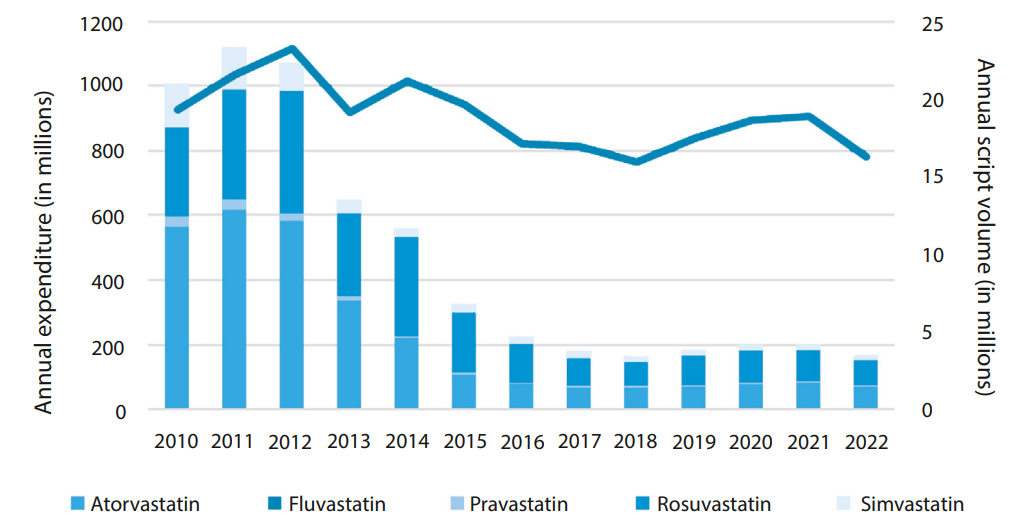
The Financial Burden of Cardiovascular Disease
Cardiovascular disease (CVD) is a significant global health concern, leading in mortality and morbidity rates. Despite the 41% reduction in CVD burden in Australia between 2003 and 2018, it remains a major contributor to the national disease burden, particularly affecting rural and low socioeconomic populations. Currently, there is a diagnosis of hyperlipidemia in over three million adults across the United States and Europe, and this number is rapidly increasing. The financial impact of CVD on Australia’s healthcare budget is noteworthy, with estimates suggesting 8.7% of total health system expenditure is attributable to CVD. The projection for total healthcare costs for CVD is expected to exceed AU$140.65 billion by 2029.
Understanding Hyperlipidemia and its Measurement
Hyperlipidemia is a condition where lipids, including cholesterol and triglycerides, elevate abnormally in the bloodstream. This elevation can lead to the development of atherosclerotic plaque and vascular disease, causing primarily cardiovascular diseases. Doctors often measure low-density lipoprotein (LDL), total cholesterol, triglyceride, or lipoprotein levels to gauge hyperlipidemia.
“Primary prevention” is the term used for managing risk factors like hyperlipidemia to reduce the risk of atherosclerotic cardiovascular disease. There is a wealth of epidemiological data that shows a direct, ongoing relationship between LDL cholesterol levels, cardiovascular events, and patient mortality. This data forms the basis for the argument to lower LDL cholesterol levels.
To control lipid levels, treatment strategies often include the use of statins, Niacin, fibrates, omega-3 fatty acids, ezetimibe, or proprotein convertase subtilisin/kexin type 9 (PCSK9).
Role of Lp(a) in Cardiovascular Disease
A recent study published in JAMA Cardiology identified elevated lipoprotein(a), or Lp(a), as a potential risk factor for atherosclerotic cardiovascular disease (ASCVD). High levels of Lp(a) are a potential cause of ASCVD. The available findings are inconsistent about whether Lp(a) may elevate cardiovascular risk solely when there is concurrent inflammation. The research found that higher Lp(a) levels were associated with increased risk of major adverse cardiovascular events, myocardial infarction, and peripheral artery disease, regardless of inflammation. This association was observed in both primary and secondary prevention populations, indicating the independent role of Lp(a) in cardiovascular risk.
Statins and the Management of Cardiovascular Disease
Statins, or hydroxymethyl glutaryl coenzyme A reductase inhibitors, are recommended as the first-choice therapy option for both CVD treatment and prophylaxis. They have been shown to effectively reduce LDL cholesterol and triglyceride levels, which in turn lowers high blood pressure and cholesterol, two leading CVD risk factors. However, with Australia’s ageing population, managing LDL levels and the associated statin costs remains a priority.
The Impact of Government Price Control Measures on Statin Pricing
Medications are included in the list after receiving approval from the Pharmaceutical Benefits Advisory Committee (PBAC), which considers either cost-minimisation or cost-effectiveness as the basis for their decision. In response to the growing and ageing population and escalating chronic health burdens, the Australian government has implemented cost containment measures. These include a mandatory 12.5% price reduction for branded medication upon generic entrance and price disclosure arrangements. These measures have led to a reduction in government expenditure as measured through benefits across all statins. However, some argue that these measures remain inefficient and that more aggressive cost control could be implemented.

Cost Implications of Statins in Cardiovascular Disease Management
Statins play a crucial role in managing cardiovascular disease, but their cost implications are significant. In Australia, annual statin benefits declined by AU$833.5 million (83.25%) between 2010 and 2022, while services reduced by 3.0 million (15.7%). This disproportionate decline skewed toward benefits, providing evidence for the efficacy of price disclosure and statutory price decreases. The cost reduced at a greater magnitude than the prescriptions of the statin market. If the 2010 cost per prescription of AU$51.87 remained the same until 2022, the 10-year summed expenditure would equal AU$12.7 billion. Compared with the actual expenditure of AU$6.0 billion, this represents AU$6.7 billion in savings, or a 47.29% reduction in government expenditure.
The Need for Optimal Pricing Policies for Statins
These cost-saving measures are significant, but we need to optimise statin pricing policies further. For example, the required 16% price drop for generic entry is less than in other developed countries. This suggests we could implement more aggressive cost control. Moreover, the timing of the price disclosure cycle doesn’t account for the initial months’ lowered medication pricing from generic brand entry. This lag between the 16% reduction and the first price disclosure cycle makes Australian prices for generic statins higher than those in the United Kingdom, Sweden, and The Netherlands. Therefore, policy adjustments are necessary to ensure cost-effective management of cardiovascular disease through statins.
Conclusion:
In conclusion, cardiovascular disease remains a significant global health and economic concern. Recent research underscores the link between Lp(a) and cardiovascular disease. It associates Lp(a) with major adverse cardiovascular events, heart attacks, and peripheral artery disease. Statins effectively manage cardiovascular disease but come with a hefty price tag. This high cost necessitates government price control measures. However, these measures may not be enough. We might need a more aggressive approach for cost-effective cardiovascular disease management. More research is necessary to fine-tune statin pricing policies and understand Lp(a)’s role in preventing cardiovascular disease. With proper strategies and policies, we can reduce cardiovascular disease’s burden on patients and healthcare systems.
